There are numerous exercises that will not only improve the shape and tone of your glutes, but also their function.
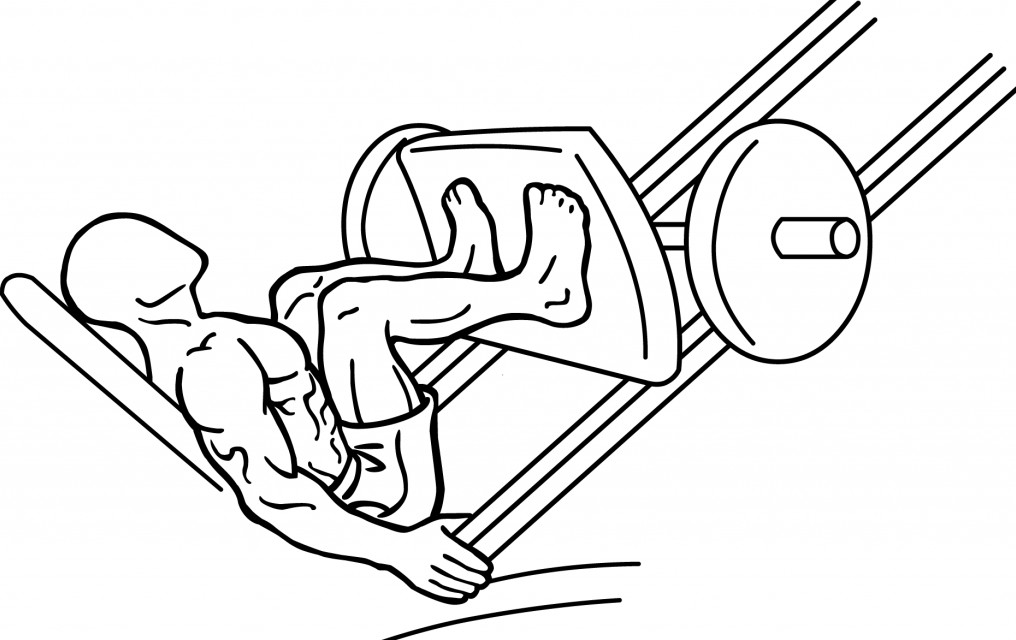
- Glutes are more than just a seat cushion
- Functions of the gluteus maximus muscle.
- Use and necessity of leg exercises
- Exercises for men and women at home
- causes of pain
- Traumatic causes of muscle pain
- Neuromuscular diseases and disorders
- diagnosis
- exercise room
- The 5 best exercises
- Exercises for the muscles of the lateral (outer) thigh surface
- Lateral leg raises while lying down
- Leg Extension Kneeling
- Exercises for the muscles in the front of the thigh (quadriceps)
- support climbing
- Bulgarian lunges
- About leg cramps
- causes
- causes for the emergence
- symptoms
- How to eliminate pain and numbness?
- Which remedies should you take?
- diagnosis
- How is it treated?
Glutes are more than just a seat cushion
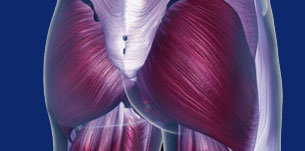

The glutes, or gluteus maximus, are a concept that most people rarely think about. They only think about it when it's swim season and we need to put on our swim trunks and worry about their form and not their function. The glutes have multiple functions, not least being an attractive seat cushion, and when these muscles are weak, many problems arise. After all, if we sit constantly during the day (at work, at home, while eating or watching TV), what muscle strength can we speak of?
Nature didn't make this muscle big enough just for beauty. The gluteus maximus ('MGM') muscle is the largest and one of the strongest muscles in the human body. The gluteus maximus is the most superficial of the three gluteal muscles and determines most of the shape and appearance of the buttocks. The gluteus maximus runs along the iliac crest and is connected to the posterior part of the proximal femur and the gluteal ligament, providing the connection between the trunk and the lower limbs.
The large girth of this muscle is one of the most characteristic features of the human musculature. Most researchers assume that humans evolved from ape-like ancestors around two million years ago on the vast savannas of Africa. It is believed that natural selection favored the survival of animals that could walk. Over time, evolution has perpetuated anatomical features in humans that enabled them to run long distances, and enlargement of the gluteus maximus muscle may have played a key role.
Functions of the gluteus maximus muscle.
The gluteus maximus muscle is very important for activities like standing up, walking and running. The function of this muscle in these activities is to extend the leg, straighten the body, abduct and align the hip with the body, rotate the hip away from and toward the center of the body, and stabilize the pelvis. This muscle can also play a role in stabilizing the knee during extension.
For example, when standing, the gluteus maximus muscle plays an important role in hip extension and pelvic stabilization. When running, this muscle provides core stabilization and helps extend the hip during acceleration and lock the leg when stopping.
Therefore, weak glutes limit the ability to perform many day-to-day activities effectively and safely. Muscle weakness can lead to difficulties in performing certain movements that require the mandatory use of these muscles, e.g. B. when getting up from a sitting position, when walking or running. Sometimes gluteal weakness can accompany back, knee, and hip pain.
Use and necessity of leg exercises
Before you start training your leg muscles, you should find out about their anatomy. There are the following muscle groups:
- The front of the thighs (quadriceps) are responsible for extending the legs and are the largest and most powerful muscle group in the legs, so they require special attention and training;
- The hamstrings (biceps) are responsible for bending the leg in the knee joints and have a rotational function;
- The lower leg muscles are responsible for the ankle joints and the movement of the foot in all directions.
Regular leg exercises are particularly important so that the muscles in the legs can fulfill their main function – motor function. In addition, there are a number of other important reasons to train the leg muscles:
- It's the body's largest muscle group, and training it uses a lot of energy, burns calories, and speeds up metabolism;
- Exercising the legs releases large amounts of testosterone and somatotropin, which are essential for building a beautiful body;
- training the legs also involves the muscles of the back, arms and shoulder girdle, ie we strengthen and develop almost all the muscles of the body at the same time.
- The exercises for the lower body are energy-intensive, develop endurance and improve strength parameters;
- A harmonious and comprehensive development of the muscular corset of the entire body is ensured;
- Developed muscles and strong leg tendons help protect ankle and knee joints from injury;
- Strengthens the cardiovascular and respiratory systems and improves concentration.
Exercises for men and women at home
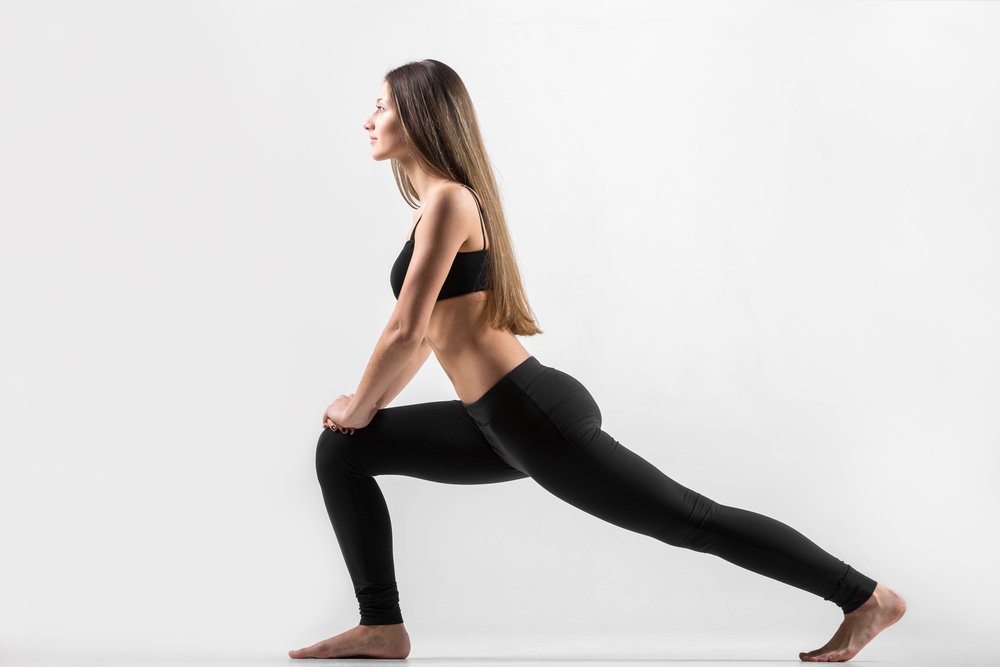
The following leg exercises are suitable for people of all genders, ages and fitness levels. It is important to determine your power level and weight before training. Pay attention to how you feel when you exercise and monitor your health with a heart rate monitor.
To work your leg muscles, perform the following exercises, resting 1-2 minutes between sets:
Stand up straight, extend one leg forward, and squat so that your thigh is parallel to the floor and your shin is vertical. Then return to the starting position and do the same with the other leg. Start with 3 sets of 20 reps and you'll feel how effective this exercise is at toning your hamstrings and glutes.
This exercise is similar to the previous one, but take a side step to get a good workout on the outer and inner thighs.
Stand up straight, take a step backward without losing your balance, and squat down with your knee touching the floor.
This variant of the exercise is performed in the same way as the previous one, with the back leg standing on a gym bench with the foot, which increases the load on the quadriceps muscles.
Stand up straight and place your feet shoulder-width apart. Slowly lower your pelvis back until your thighs are parallel to the floor. Don't try to bring your heels in front of your feet, but keep your back flat and knees at tiptoe height.
This is a very effective exercise that requires some preparation. If you can't do them right away, you can place your free leg on a stool and hold the support with your hands.
Lie on your back, plant your feet firmly on the floor, and from this position raise your pelvis as high as you can.
causes of pain
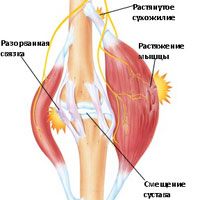
Musculoskeletal pain is usually caused by direct trauma or injury in the form of a muscle strain or tear. A muscle strain occurs when a few muscle fibers are damaged, while a muscle tear occurs when a large number of muscle fibers are torn. A torn tendon (rupture) can also lead to muscle pain. Muscles and tendons are able to regenerate, but when a muscle or tendon is severely torn, the integrity of the damaged structures must be surgically restored. Muscle pain can be caused by spasms from overexertion or abnormal nerve impulses that cause excessive muscle contraction. In some cases, muscle pain can be a symptom of a serious or life-threatening condition, such as a heart attack, meningitis, or cancer.
Traumatic causes of muscle pain
Muscle pain can accompany any type of injury, including:
- Blunt trauma
- Muscle strain or tear
- Excessive or repetitive movements
- Nerve compression (due to herniated discs, spinal canal stenosis)
Neuromuscular diseases and disorders
- Amyotrophic lateral sclerosis (ALS, Charcot's disease) is a serious neuromuscular disease that causes muscle weakness and leads to disability
- Injuries to the brain or spinal cord
- Dermatomyositis (a condition characterized by muscle inflammation and a skin rash)
- Lyme disease (inflammatory bacterial disease transmitted by ticks)
- multiple sclerosis (a disease that affects the brain and spinal cord, causing weakness, problems with coordination, balance, and other problems)
- Muscle wear (rhabdomyolysis)
- muscle infections such as B. Abscesses
- Parkinson's disease (a brain disorder that causes problems with movement and coordination)
- Polymyalgia rheumatica (a condition characterized by muscle pain and stiffness)
- polymyositis (inflammation and weakness of the muscles)
- stroke
diagnosis
The diagnosis of muscle pain (myalgia) is mainly based on the medical history and the symptoms. Most myalgias are associated with muscle strain (eg, due to poor posture or lack of exercise) or trauma (eg, sprains, bruises, or sore muscles during exercise). Instrumental investigations, such as ultrasound or X-ray, CT or MRI, help to confirm or differentiate the Causes of muscle pain.
The doctor will be interested in the type of pain, the location of the pain, and the intensity of the muscle pain. This information can be crucial in determining the cause of the leg pain. Very important is information about muscle injuries, bruising, factors that cause the muscle pain to increase or decrease, or whether the pain persists, such as: a herniated disc, and the time of the pain (day or night).
Study. The medical examination can identify painful areas, discoloration, the range of motion of muscles or joints, muscle strength, local tendon pain or the identification of trigger points (e.g. in fibromyalgia). In addition, reflex activity, sensitivity, and other neurological tests are important to determine the presence of neurological disorders. The timing of the onset of muscle pain is also important, e.g. B. in osteoporosis or Bechterew's disease. Alcohol or drug abuse can be a possible cause of muscle pain, and information about them is important in finding the cause of muscle pain. Some medications can also cause muscle pain as a side effect.
Blood tests can detect the presence of inflammation or infection, as well as autoimmune processes; biochemical tests can show abnormalities of internal organs (e.g. liver or kidneys).
Ultrasound examination (USG). This method of examination makes it possible to visualize the presence of muscle inflammation (myositis), muscle tears and tendons.
exercise room
The muscles of the leg are made up of dozens of components. They are therefore considered to be the most complex, connected muscle system in the human body. Even small calves have many small muscles that lie at different depths. A well-planned workout therefore includes a 'mix' of exercises.
The hamstrings are easier to train with squats. The glutes and hamstrings can be worked with the help of squats and lunges. There are also outer and inner thighs that can be worked with leg extensions and lunges.
The 5 best exercises
How can you pump up your legs? All athletes do this in different ways. Everyone chooses a variant that is comfortable for him. The best exercises are:
1. slow, weighted squats. This is a classic exercise that works your calves, glutes, and quads.
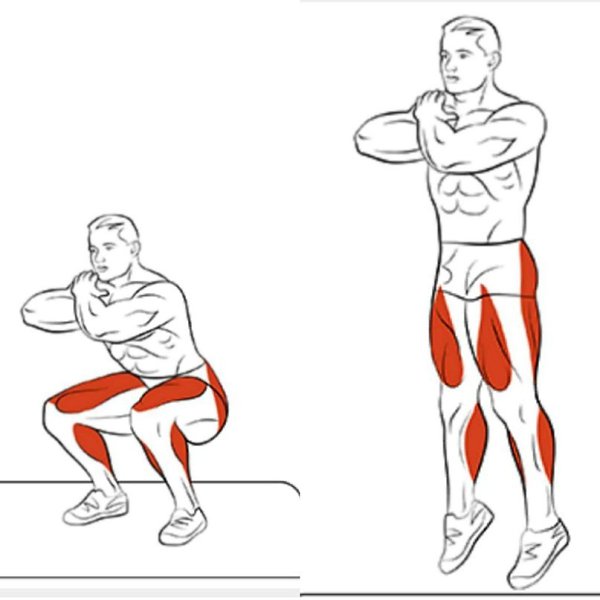
2. Platform Press. These are normal squats, but performed on a special platform. The muscle load can be adjusted independently.

3) Leg curls on an exercise machine The best option for training the quadriceps muscles. Your back must be straight for this exercise.
4. Leg curls in a horizontal position. This particular exercise works the hamstrings and lower glutes.
5. straighten your legs while sitting. This also works the glutes and outer thighs.
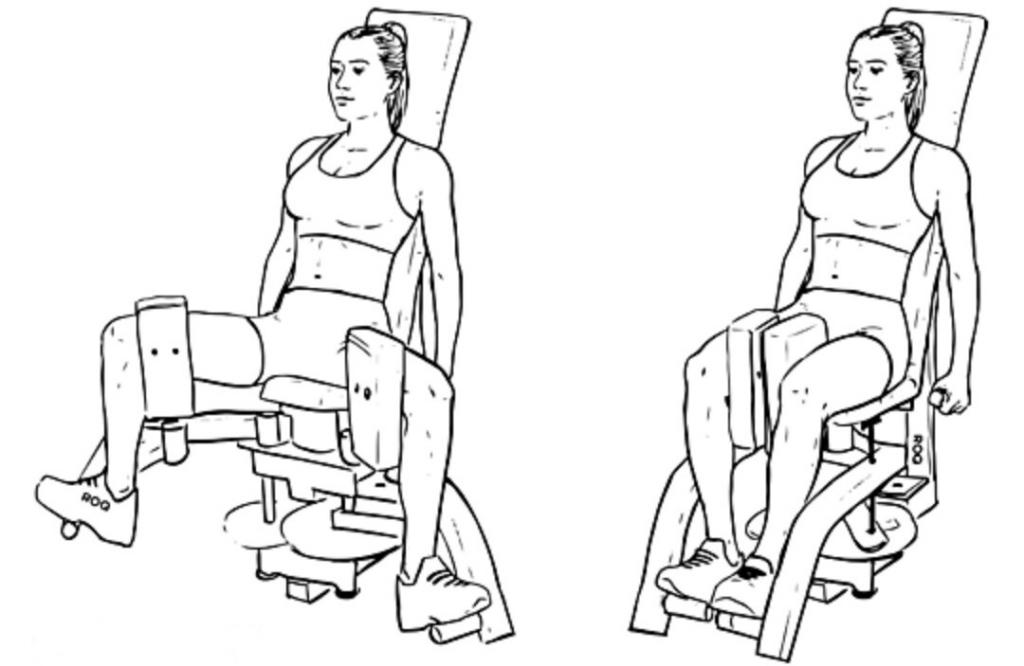
The barbell squat is a classic exercise performed by all athletes. It serves to develop the leg muscles. Without them, it is impossible to achieve the desired results.
The leg press is somewhat similar to the classic squat, but it's not always a substitute for it. It all comes down to proper technique and involving the abdominal muscles and diaphragm.
Beginners often make the mistake of taxing the leg muscles with too much weight. This works the front thighs but 'turns off' the transverse abdominal muscles and the lower back starts to hurt.
Exercises for the muscles of the lateral (outer) thigh surface
One of the most effective leg exercises is the supine side leg raise. The weights for this exercise are your own weight, but you can also place sandbags on your calves.
Lateral leg raises while lying down
- In the starting position, lie on your side and place one hand in front of you at chest height and the other behind your head;
- On an exhale, raise the top leg until it is parallel to the floor;
- As you inhale, lower it down but don't put it down and immediately raise it back up.
Repeat the exercise 30-35 times, then turn to the other side.
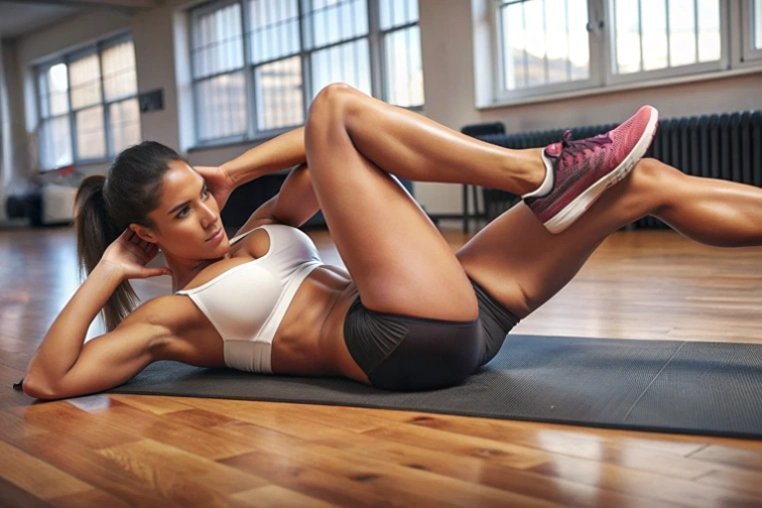
Leg Extension Kneeling
This exercise trains both the inner and outer thighs. The difficulty of the exercise is low, so if you're trained for it, you can squat with the dumbbells.
The starting position is to stand on all fours and lean on your straight arms, knees and toes. The legs are bent at the knees. If you're using a dumbbell, bring it into hip and shin flexion.
On an inhale, move the bent leg to the side until it is parallel to the floor, fix it for 1-2 seconds, and then return the leg to the starting position. Perform all movements evenly and slowly without jerking.
Perform a set number of repetitions, about 20-30 lifts, then remove the weight, if used, and perform another 10-15 similar movements. Then do the exercise with the other leg.
Exercises for the muscles in the front of the thigh (quadriceps)
support climbing
This exercise works all the leg muscles and even the abs, but especially the quadriceps muscles. You need a hard surface to climb on - chair, stool, bench, box.
- Starting position: legs together, back straight.
- As you inhale, step one foot onto the mat, move the other foot for a second.
- On the exhale, return to the floor and do the same exercise with the other leg.
Perform the step outs in 15-20 strides per leg, with 2-3 approaches, one minute between each step. For added weight at the top, you can hold the exercise for 30-40 seconds, periodically cushioning the supporting leg.
Bulgarian lunges
This isolation exercise has a visible toning effect on the quadriceps area without overloading or pumping it. The difficulty level of the exercise is high because, in addition to performing the lunges, you also need to focus on maintaining your balance.
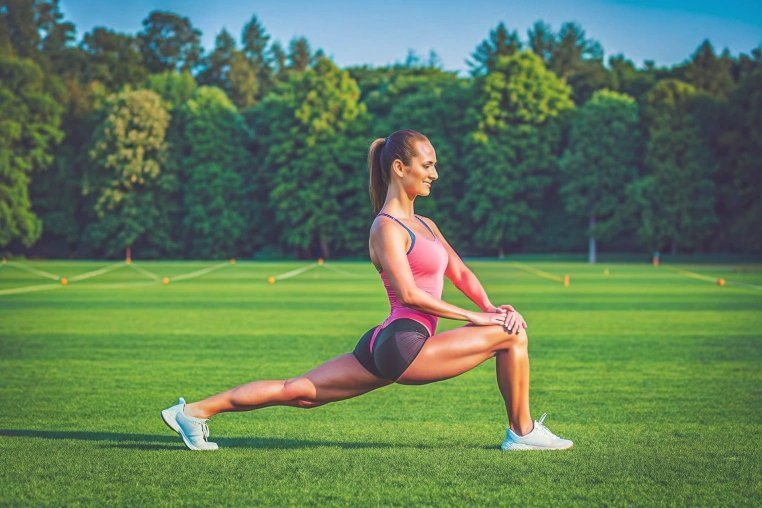
- Assume a starting position - the left leg rests on a support and the right leg is relaxed and stretched forward.
- On an inhale, lunge with your right foot until your knee forms a 90-degree angle.
- The foot rests on the heel. On the exhale, return to the starting position.
For meaningful results, perform 15-18 lunges with each foot, doing 2 to 3 of these exercises a minute apart.
About leg cramps
Leg cramps are often accompanied by unpleasant, painful sensations, severe discomfort and the inability to move the limbs. This phenomenon is most common in the elderly, pregnant women and competitive athletes.
The phenomenon is characterized by a strong muscle spasm. The fabric becomes very stiff and feels dense. The spasm can affect the entire limb, foot, or thigh muscles. More often, however, the cramps occur in the calf muscles. If this symptom occurs regularly, is accompanied by pain and affects your quality of life, then you should definitely consult a doctor to find out the cause of the leg cramps and initiate timely treatment.
causes
Leg cramps can be caused by overactivity of the cerebral cortex. They can also occur when the conduction of nerve fibers is disturbed or the ATP level in the blood drops. These processes develop after intense physical activity, after traumatic brain injury, under stress or when wearing uncomfortable shoes. The causes of cramps can be different. The most common cause is varicose veins. A phlebologist can determine the trigger for this symptom after an initial diagnosis.

The most common causes of leg cramps during the day or at night include
- mineral and vitamin deficiencies. They can occur when the body is dehydrated, after intense physical activity, or when there is a lack of nutrients. This symptom can be caused by a lack of B vitamins or magnesium.
- Diabetes can cause hypoglycemia.. This is caused by the administration of insulin. Treatment can only be carried out by a specialist who will establish the treatment regimen and select the optimal dose of insulin for each patient.
- Excessive physical activity.. Often occurs in people who play sports. Footballers, basketball players and weightlifters are at risk.
- Spasms can occur with thrombophlebitis, varicose veins, regardless of the stage of these diseases..
- Atherosclerotic diseases are associated with a high burden on the entire cardiovascular system. The heart and blood vessels are particularly affected. It is caused by hereditary predisposition, unhealthy lifestyle habits, unhealthy diet and high cholesterol levels.
- Diseases of the heart and blood vessels have a negative impact on blood flow. This is accompanied by swelling, pain and leg cramps at night and during the day.
- Changes in hormonal balance can trigger leg cramps in women during childbirth.. This problem can occur against the background of taking oral contraceptives, during menopause, during puberty, with drastic changes in the hormonal balance.
- With increased stress on the central nervous system, frequent severe stress, sleep disorders, muscle cramps can also be triggered.. Such a symptom passes spontaneously if the stress can be managed and the regime restored.
causes for the emergence
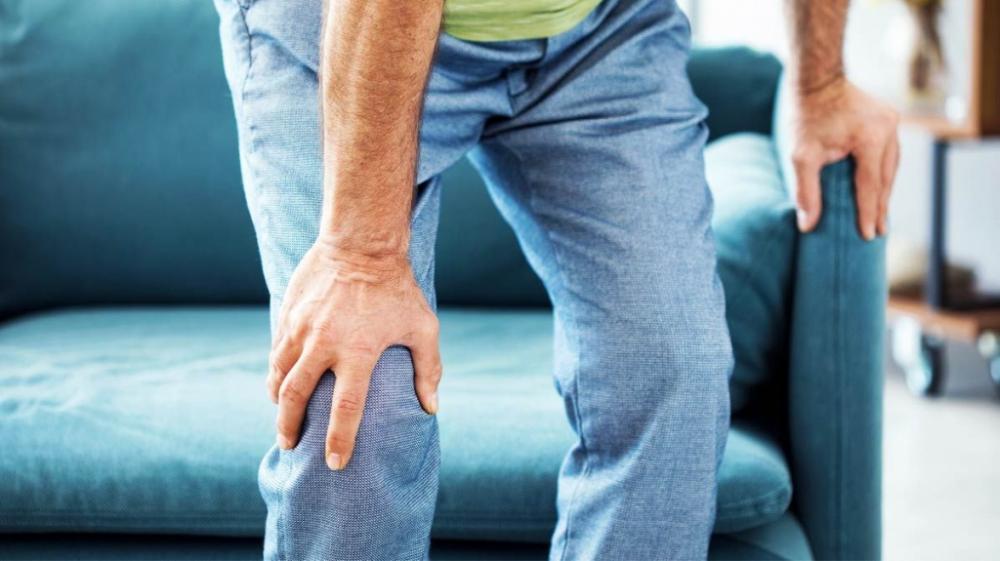
The feeling of weakness in the legs can be caused by various pathologies of the lower limbs. Most often, this symptom is accompanied by the development of varicose veins. In these cases, fatigue occurs immediately after exertion and is accompanied by numbness, burning and itching of the surface of the epidermis.
Vascular diseases of a neurological nature also cause weakness in the leg muscles. These diseases are dangerous because in advanced stages they can lead to a stroke or heart attack. Transient ischemic attacks can also present as sudden weakness in the legs that quickly resolves on its own. Heart attacks and strokes can occur not only in the brain tissue, but also in the spinal cord.
Such processes are dangerous and can lead to disabilities. Recovery is often difficult and lengthy. The development of a heart attack may be accompanied by weakness. It can also be accompanied by stomach pain, bloating, and nausea. The symptoms are vague, so the diagnosis is not always easy to make.
The veins or arteries of the lower limbs are often affected by the vascular diseases. Chronic venous insufficiency causes weakness and pain. The veins swell, itch and burn. A complication of this process can be thrombosis or thromboembolic disease. This can be life threatening. Atherosclerotic growths on the vessel wall are one of the most common causes of claudication in the elderly. Endarteritis obliterans is another condition that causes weakness and limping in the legs. This is accompanied by vasoconstriction of the blood vessels. In addition, the following clinical signs appear:
Feet can be tired when there is muscle fatigue. In some cases, this symptom is caused by overwork. However, there are some pathological processes associated with disruption in the transmission of neuromuscular impulses. Myopathy and myositis are characterized by direct damage to muscle fibers. With the development of multiple sclerosis and amiotrophy, neurons and muscles die.
symptoms

A person's emotional state has a major impact on their health. The autonomic nervous system produces specific body responses to external stimuli. This leads to the following symptoms
- palpitations;
- increased breathing;
- increased peristalsis of the digestive system;
- Increased circulatory speed.
Psychological or emotional negative processes can influence why legs feel padded:
- panic attack;
- an attack of hysteria;
- Persistent stress;
- increased anxiety;
- depressed state;
- psychotrauma;
- neurocirculatory dystonia.
Joint disorders can also cause swelling in the legs. Pathological changes develop in which joint tissue is destroyed. There is also swelling, pain and restricted mobility. These diseases include:
Spinal disorders can also cause similar symptoms. Spondylitis, spondylolisthesis and tumors can occur in the tissue. If the legs sag and there is severe weakness when walking, this can be a symptom of osteoporosis, demineralization of bone tissue or bone tumors. Increased exertion also leads to muscle soreness and fatigue. This does not only apply to physical exertion. Leg weakness occurs as a result of being overweight, in the third trimester of pregnancy and with lymphatic congestion.
Other causes of leg weakness and pain include:
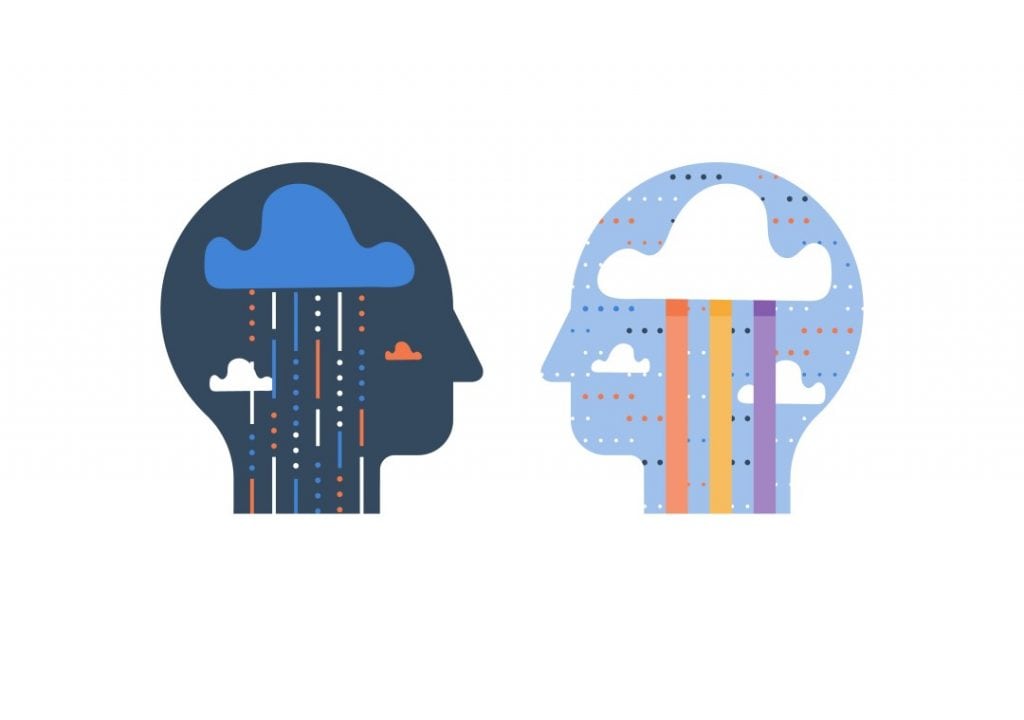
- persistent stress.
- Poisoning, which can occur with infections, colds, sunstroke, food poisoning.
- iron deficiency anemia. Additional symptoms such as shortness of breath, numbness of the limbs, poor circulation.
- Mineral deficiency of calcium, potassium, sodium, magnesium. The water-salt balance and the transmission of nerve impulses are disturbed.
- age group. With age, muscle mass weakens. Tremors and limb weakness are more common after the age of 65.
- Treatment with certain drugs such as corticosteroids, interferons.
- entrapment of nerves.
- diabetes mellitus.
- thyroid hormone deficiency.
- Dementia.
How to eliminate pain and numbness?
If severe leg cramps severe leg cramps, what should you do?? The first thing you should do is curl your toes together or press your foot firmly to the floor. Often muscle spasms occur during sleep and the person wakes up. Sit up gently, press your palms against the affected area and massage intensively until the discomfort disappears. Then raise your legs to relieve blood pressure. For sudden occurrences severe leg cramps, what should you do In a crowded place? Use your fingers to firmly squeeze the muscle and hold it until the pain subsides.
What should you do if a leg cramp occurs?? After treating the spasm, you should consider: What is the cause? If the spasm occurs frequently, you should see your GP. He or she will prescribe a series of tests for you:
- A clinical blood test to detect any inflammatory changes, a red blood cell test to better understand your problem.
- A blood sugar test – to rule out diabetes.
- Urine test – to see if your kidneys, the organ that controls the body’s water and electrolyte balance, are malfunctioning.
- Venous ultrasound – to assess blood formation and determine if there is venous insufficiency.
It is likely that this information and investigation will indicate the need for further testing, but only your GP will decide that. He or she will then refer you to a specialist who will prescribe comprehensive treatment.

Which remedies should you take?
If you are diagnosed with varicose veins at an early stage, your doctor will prescribe medications:
In addition to the tablets, you need to regularly do therapeutic exercises, because one of the causes of varicose veins is an inactive lifestyle.
Now you know the causes of leg cramps. Muscle pain and cramps are a common problem in the body. Therefore, it is advisable to see a doctor as soon as possible to determine the cause and prescribe an effective treatment.
Experimenting with your health on your own can be a waste of time.
This entry was posted in Orthopedics. Bookmark the permanent link.
All material on this website is for educational purposes only and is not intended to offer medical advice, diagnosis or treatment. The website administration, the editors and the authors are not responsible for any consequences or damage that may result from the use of the material on this website.
diagnosis
Treatment for seizures is performed by different doctors depending on the disease diagnosed. The diagnosis is made by a neurologist. It may include the following steps:
- Oral questioning of the patient. In this phase, the anamnesis is collected. The doctor asks the patient about the symptoms, the frequency of the seizures, and the timing of the seizures. In addition, he/she asks questions about the presence of chronic diseases.
- Examination of the lower limbs. The doctor examines the patient's lower limbs and comments on any changes in the muscles, looks at the veins, assesses the condition of the feet and swelling. A separate part of the examination is to check if the reflexes are still there.
- conducting tests. A blood and urine test, as well as a biochemical test, will help determine the cause of the spasm. In addition, vitamins are tested and hormone levels are determined. If there is a suspicion of poisoning or overdose, a special test is performed to confirm or refute the diagnosis.
- ULTRA SOUND. An ultrasound scan of the internal organs and blood vessels of the lower limbs will help assess the condition of the body and determine the cause of the anomaly. If you are diagnosed with flat feet, you will be referred for an x-ray. First of all, an ultrasound examination of the abdomen and thyroid gland is performed.
How is it treated?

Treatment for night cramps is to eliminate the disease that is causing the cramps. When there is no cure for the disease, doctors prescribe specific therapy to control and relieve symptoms. Therapy often consists not only of drugs, but also includes physical therapy, gymnastics and massage.
If the cause of night cramps is crunch syndrome, the patient is prescribed antiepileptic, analgesic, antispasmodic drugs. If the main cause of the muscle cramps in the legs is flat feet, the doctors resort to a different treatment method. In this case, it is necessary to reduce weight, choose the right footwear and avoid strenuous exercises. Patients with flat feet need massage and physical therapy.
If endocrine disorders are present, hormone therapy may be indicated to improve the patient's quality of life.
B vitamins can have a positive impact on the treatment of contractures. If there is a water-electrolyte imbalance, special preparations and solutions for the treatment of muscle spasms should be used.
In severe forms of the disease, surgical intervention can be performed to eliminate the factor contributing to the appearance of spasms.
Treatment should be started as soon as the first symptoms appear. The appearance of convulsions should not be ignored, as they help identify a disease, the consequences of which can be fatal. If you have regular night cramps, you should immediately make an appointment with a neurologist who can make a good diagnosis and prescribe treatment.
Therefore, spasms can only be treated effectively if the exact cause of the spasms is known. Treating the disease, the symptoms of which are muscle spasms, will help sufferers get rid of pain and tension in their legs.
Read more:- The muscles that move the foot.
- Shin extensor muscles (tibialis extensor muscles).
- The flexor muscles of the foot.
- How muscles and bones are related.
- muscle work while running.
- Which muscles of the anterior tibial group do you know?.
- Which muscles hurt after running?.
- On half-bent legs.
